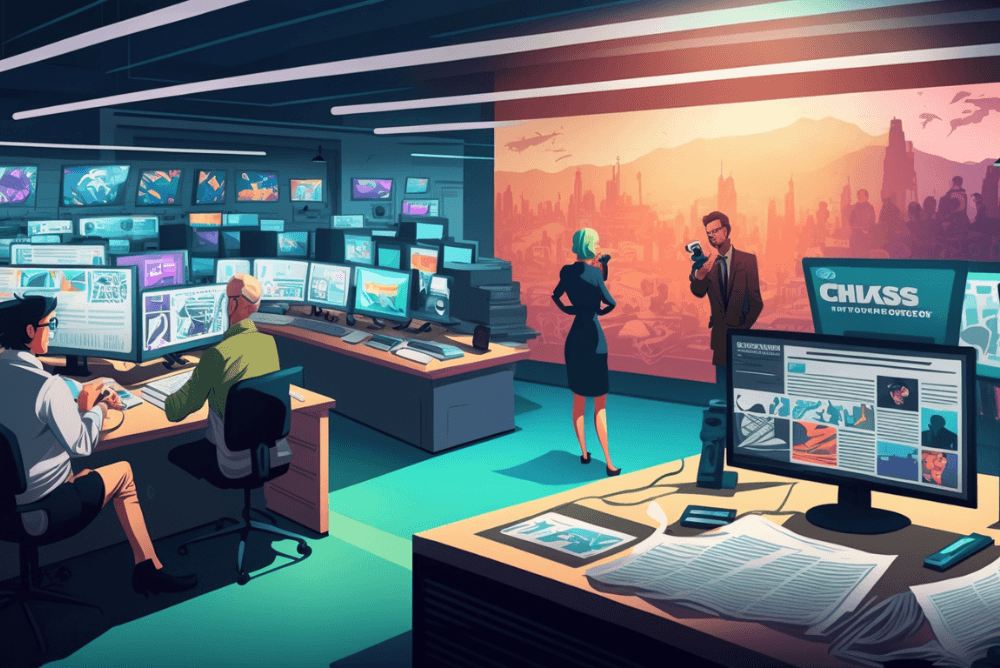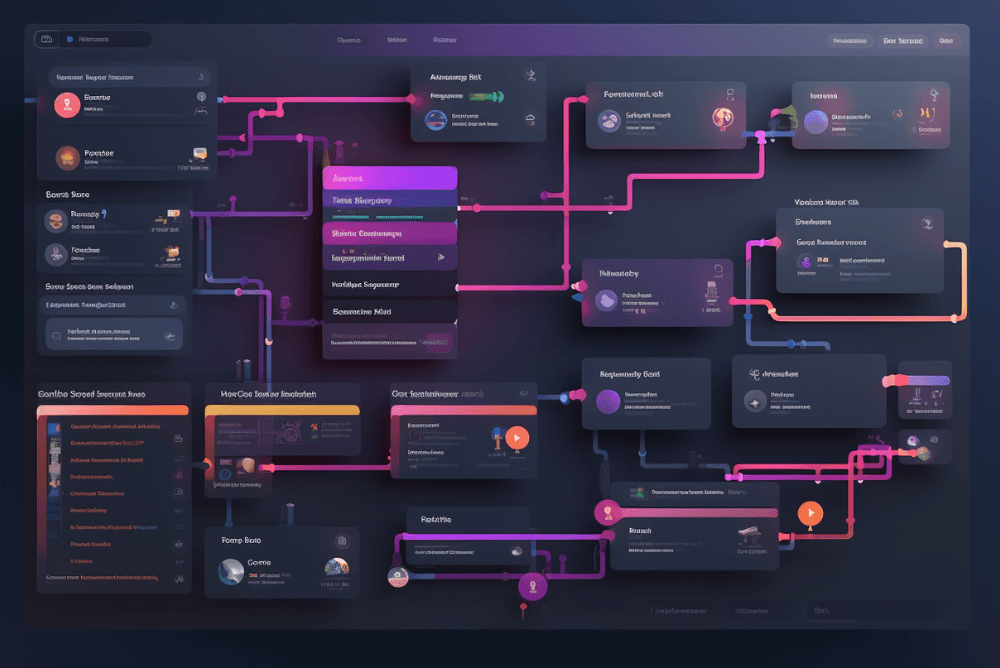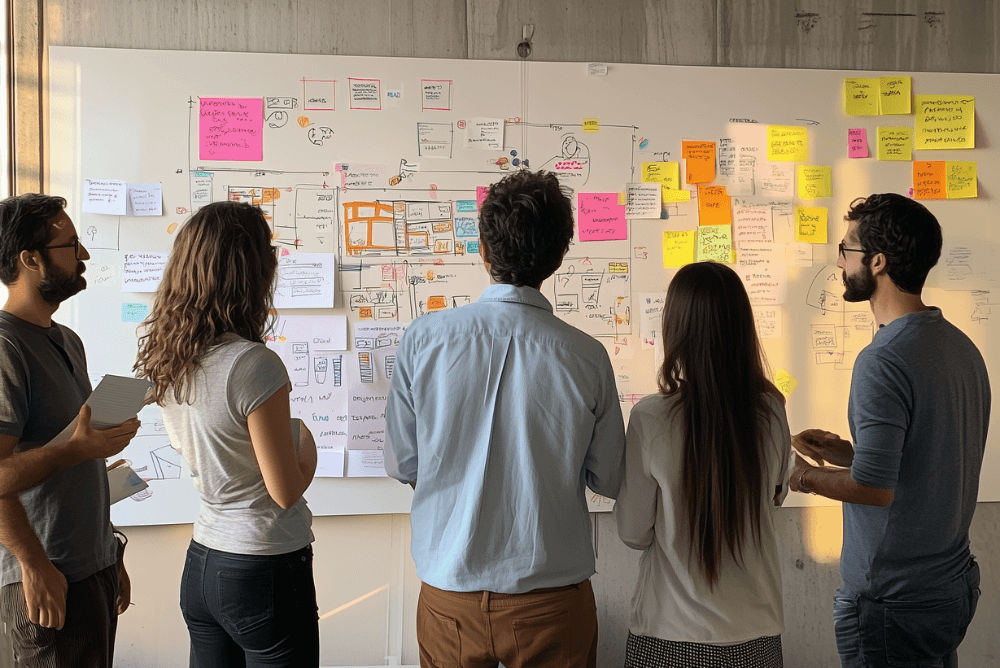12 tips on how to prepare for collaboration with UX designers
18 Dec 2024
Every successful project starts long before the official "Day 1" marked in the timeline. While diving headfirst into the creative process is tempting, skipping the preparatory work can lead to complications, misunderstandings, or missed opportunities. It’s best to prepare – and ensure that everyone involved is aligned, well-informed, and ready to hit the ground running.
In this article, inspired by our latest internal discussion, we outline 12 essential tips for companies preparing to work with UX/UI consultants. Whether you're about to embark on a new project or just considering hiring a team, these practical steps will help you make the most of your collaboration.
Let’s explore how a little groundwork can set the stage for a smooth and productive partnership with UX designers, allowing your project to start strong and stay on track.
1) Get the right attitude towards the project
We believe that a successful collaboration starts with the right mindset. For a UX/UI project to thrive, openness, honesty, and transparency are key. These qualities create an environment where all parties can comfortably discuss challenging topics—whether it's about the company’s plans, past setbacks, or current struggles.
This is why we always encourage the client to share what worked and what didn’t, what problems they face, and what ambitions they hold. What’s important is that as designers, we aren’t here to judge but to help. Our role is to gather as much information as possible to tailor their solutions to your unique needs.
Of course, confidentiality is an integral part of the client-consultant relationship. What’s shared within the project stays within the project. Setting this expectation helps all involved feel secure and ready to collaborate openly. Preparing your team with this attitude ensures a smoother process and a stronger foundation for success.
2) Set goals and KPIs
Clear goals and measurable KPIs are essential for aligning the project with your broader business strategy. While it might seem like these are outside the scope of UX/UI design, they play a crucial role in guiding the project. They provide the "north star" for designers, helping them understand where your organization is headed and how their work can contribute to achieving those objectives.
Even if your company hasn’t fully developed its strategy or KPIs yet, that’s okay. Designers are accustomed to working in various contexts, including when these metrics are undefined. In such cases, they leverage their expertise and collaborate with you to establish interim benchmarks that align with your aspirations.
3) Define collaboration culture
Collaboration is at the heart of any successful project, and navigating the intersection of two organizational cultures can be one of the most critical steps. Each company and team has its own working style, preferred tools, and unwritten rules. When these collide, friction can arise—unless there’s a deliberate effort to harmonize them from the outset.
Sometimes, this process involves resolving small but impactful logistical issues. For example, your team might use Teams while the design consultants prefer Slack. Or your organization might require two weeks’ notice for meetings while the designers operate with more immediate availability. These differences, no matter how minor they seem, need clear resolutions early on.
Equally important are the subtler aspects of culture: whether communication is formal or relaxed, how feedback is exchanged, or how decisions are made. Establishing mutual understanding about these dynamics helps prevent misunderstandings and ensures smooth collaboration throughout the project.
4) Identify and introduce stakeholders
A critical step in project initiation is identifying and involving stakeholders. Before any work begins, it's essential to map out who will play a role in the project, from decision-makers to influencers, supporters, and skeptics.
Start by clarifying the decision-making structure. Who has the authority to approve various aspects of the project, and at what stages? Understanding this early avoids delays caused by unclear responsibilities. Additionally, engaging skeptics – both within the organization and among potential users – can offer valuable insights. These individuals often provide fresh perspectives or voice concerns that may otherwise go unnoticed, enriching the design process.
Equally important is understanding stakeholder availability. High-level executives, for example, may have limited time. Scheduling their involvement during critical discovery or decision-making phases requires advance planning. Moreover, include users in your stakeholder analysis. If user research or testing is planned, this is the time to identify who they are and what information is needed to understand their behavior and expectations.
5) Assess risks and limitations
Every project carries inherent risks, but anticipating and addressing them early can make the difference between success and failure. Risks aren't always negative—there may also be unexpected opportunities to capitalize on. Identifying both types ensures a proactive approach to managing uncertainty.
As a client, consider potential risks or limitations that could impact the project. These could include organizational challenges, resource constraints, or technical dependencies. Reflect on lessons from previous projects: What worked? What didn’t? Sharing this knowledge with the design team helps avoid repeating mistakes and builds on past successes.
Designers often explore risks during discovery, but preemptive discussions can save time and reduce stress. If your organization is aware of specific challenges, communicate these upfront. Likewise, if you’re unsure of certain risks, the design team can guide you in assessing and mitigating them.
6) Grant UX designers credibility
When external designers enter an organization, their presence can sometimes raise questions or concerns among employees. This makes establishing legitimacy and clear communication from leadership essential.
A strong introductory message from senior management outlining the purpose of the design project can set the tone. This message should explain who the designers are, what they aim to achieve, and why their work matters. Avoid framing this communication as a directive; instead, present it as an invitation for collaboration.
Widespread communication about the project’s goals should reach all relevant departments – even those not directly involved in the initial phases. This prevents confusion or resistance later, especially if the project touches unexpected areas of the organization. For example, departments like IT, design, or others heavily impacted by the project should receive tailored communication addressing their concerns.
7) Collect documentation
Documentation is invaluable during the discovery phase. Whether it's PDFs, PowerPoints, Word files, or other formats, these materials often contain insights that save time and guide decisions. Companies typically have a wealth of internal resources such as market research reports, competitor analyses, user feedback, training materials, or documentation from previous phases of the same project.
Gathering and organizing these documents early is key. Make sure they're up-to-date and relevant, then compile them in one accessible location. Even seemingly unrelated documents, like user manuals, can hold hidden gems of information. Designers will comb through these materials, identifying knowledge that prevents duplication of effort and accelerates the discovery process.
8) Share the UI standards
Design standards form the foundation for maintaining consistency and efficiency in any project. Many organizations already have guidelines, whether it’s a brand book, UI libraries, design systems, or prebuilt components for development. Sharing these assets early allows designers to familiarize themselves with your company’s visual language and expectations, ensuring they can hit the ground running.
The earlier designers access these resources, the more time they have to align their work with existing standards. This reduces the risk of misalignment and ensures that the project adheres to brand consistency. Whether it’s detailed guidelines, component libraries, or higher-level design principles, providing this information at the outset sets the project up for success.
9) Ensure access to analytics
Analytics is crucial to understanding user behavior and making data-driven decisions, but its reliability must be ensured before the project begins. Imagine starting a project only to discover halfway through that the analytics setup is faulty – outdated, broken, or producing inaccurate data. Fixing the system might be quick, but gathering new, reliable data often takes significant time, delaying key phases of the project.
To avoid such issues, it’s essential to assess the state of the analytics setup early. Verify that the tools are working correctly, collecting the right data, and covering a meaningful timeframe for statistical significance. This assessment isn't about analyzing the data yet but ensuring its quality and readiness.
10) Think about the access to the end user
While the exact scope of user research might not yet be finalized, the project’s nature and initial discussions often indicate the need for certain activities—surveys, interviews, usability tests, etc. To enable these activities, it’s critical to evaluate early on whether access to end users is feasible.
Consider whether the company can support recruitment efforts for participants. Can you provide access to respondents for surveys or facilitate interviews with representatives of the target group? Recruitment logistics, including finding participants and securing their agreement to participate, must be planned.
Read also: How to navigate UX projects with limited or no user access?
Many organizations have processes that might delay access, such as legal or data privacy reviews. If, for example, marketing has a list of potential respondents, legal departments might require approvals before it can be shared. Such procedures can take time, so starting these discussions early ensures smoother execution when research begins.
11) Prepare the access to tools and systems
Access to tools and systems is another critical preparation task. Designers must explore the tools, systems, or software relevant to the project, both in live (production) and test (development) environments. Manual exploration often yields insights that a high-level demo cannot.
Ensure that necessary accounts, permissions, and VPNs are set up well in advance. Delays in this area can waste time, disrupt workflows, and lead to frustration. Preparing access protocols beforehand ensures seamless project onboarding.
12) Plan the calendar
Planning the calendar early is critical to a smooth project start. Schedule all key meetings, especially those with stakeholders and senior management, well in advance—particularly for the discovery phase. Address potential scheduling conflicts, such as vacations or other obligations, as early as possible to minimize disruptions later.
Be mindful that some stakeholders require significant notice to accommodate meetings in their packed schedules – often at least two weeks in advance. To streamline this process, clearly define who will be responsible for inviting stakeholders to meetings. Proper introductions of the project team and their role will help ensure invitations are taken seriously and not overlooked.
Additionally, decide on logistical details, such as whether internal arrangements like room bookings will be handled by the client or the agency. Recording meetings during the discovery phase can be an effective tool for supplementing notes, but always obtain consent beforehand. For instances where recording isn’t feasible, ensure adequate note-taking support to maintain the clarity and accuracy of discussions.
The key: treat the preparation like a mini-project!
With so much advice and so many recommendations, how can you turn this knowledge into action? The key is to treat the preparation phase as a mini-project itself. Here are some of our recommendations:
- Start two months in advance: Ideally, begin preparations two months before the project launch. One month may suffice, but it often risks leaving critical tasks incomplete. Giving yourself this lead time significantly reduces the chance of last-minute chaos.
- Kick-off organizational meeting: Once the business terms are finalized and contracts are signed, hold an organizational kick-off meeting. Use this meeting to address as many preparation points as possible. Some issues will be resolved immediately, while others may require follow-ups to gather information, finalize decisions, or access resources.
- Track tasks in a project management tool: Treat these preparation tasks as part of the project lifecycle. Log them into your task management system (e.g., Jira) and track their progress in weekly or biweekly check-ins. This ensures accountability and visibility as you close out each task.
- Achieve full readiness: The goal is to have everything—knowledge, resources, and decisions—ready by the project start date. This preparation allows the team to hit the ground running, avoiding delays or wasted time on preventable issues.
- Last but not least: prepare questions for the design team! We also prepare thoroughly for the project kickoff and are ready to answer any questions that arise during your planning. Whether it’s understanding what to expect, preparing for specific project phases, or addressing uncertainties, we’re here to help. We don’t want these meetings to be monologues—having a list of your questions and concerns allows us to provide the most meaningful guidance.
We strongly encourage you to invest in preparation. Don’t start a project on Monday that was only announced on Friday. Give yourself time to work through these points and ensure that the project begins with clarity, organization, and confidence. This groundwork will reduce stress and significantly improve the chances of project success.
Good luck!
And if you’re looking for a UX/UI team for your next project – contact us!



